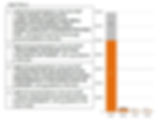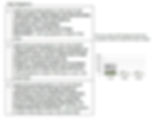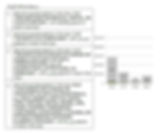What specific technology represents a certain country?
- Dierk Oliver Kiehne
- 18. Nov. 2016
- 7 Min. Lesezeit

© fotolia
Watches are made in Switzerland, robots in Japan, software in the US-silicon-valley and the Netherlands is the bicycles-country. Is it that simple? Is there a certain technology-field that a certain country represents more than all others? What are “typical markets” in certain countries?
Within a worldwide patent evaluation study this question was investigated and indeed there are technologies where in certain countries almost 90% of all patents worldwide are granted. These markets are very country-specific. And for these markets these technologies seem to play a very important role, which means from a patent point of view that inventions addressing these technologies must be granted in these countries in order to have covered the most relevant markets.
Methodology
The basis for the study were all patents including 159[1] countries.
All patents have been sorted by applications and granted patents. This was done for different time intervals, each containing one calendar year. Then for all these patents the international patent classification (IPC) was analysed in order to find a certain classification level[2] that would make sense to analyse. In order to be able to determine a significant amount of patents - some IPC classes are covering a very specific technological field – the variation of patents within a year inside each IPC-level was analysed. The result was that in IPC level 3 (i.e. H01L) the highest significance for all classification fields could be determined.
On this level all IPC class sizes for all countries were determined. Afterwards the share of each IPC class compared to the total size of all patents was determined, on a worldwide level and on country level. These two ratios were compared. Also the ratio of a country’s IPC class to the total worldwide amount of patents in this class was built.
From a procedural state point of view it was important to exclude senseless applications that i.e. document the state of the art or those that were done in order to pretend patent activity (strategic applications) or defensive publications. For this reason only the granted patents were taken into account.
Results
The results were quite amazing. It is obvious that technologies are not equally distributed in each country and that this distribution is also different to the worldwide average according to the fact that i.e. the industrialization level and economic structure is different. The study shows impressively that certain technologies are extremely dominant in different countries - compared with the global average.
What is this information used for? Within patent valuation it is always important to have a look on the technology itself and the markets that were addressed with it. Here is one essential question: Is this technology a trend, in growth, descending or a niche? And of cause how relevant is it for a certain market? In terms of valuing a patent this is essential. It is clear that technologies with high relevance, where many patents are applied are of higher value than those where just few patents are applied. And of cause this is country-specific. This means that a patent that is filed in a certain country and describing a technology that has a strong relevance in this country must be of higher value than a patent that is filed in the same country but of low technical relevance for this country.
Most granted patents per country and technology field
The first results were the shares of a country’s IPC Class size in relation to the total IPC Class size. The problem: By building the ratio, the total sizes of the IPC class sections are getting lost. Especially by analysing only the granted patents the total amount of patents in IPC Classes even on level 3 varied strongly. So the biggest class size contained 521,608 and the smallest only 15 granted patents[3], the average size was 14,484 patents per IPC class.
So the result of this analysis was named “big fish in a small tank”. Surprisingly there were even some countries having more than 10% of all granted patents worldwide where the total size of IPC classes was even bigger than the average. Here the technologies were indeed meaningful and significant for a country. In order to make the analysis even more meaningful, not only the biggest IPC Class section per country was shown but the top 4 sections.
The top 10 countries with the biggest (in average) and most remarkable shares will be described below:










Granted patents in the most relevant technology fields
For the second analysis the ratio of the first analysis was multiplied with the relative size4 of the IPC class. By this method the total size of an IPC class was taken into account too. The result shows the total strength of countries in big technology fields. USA (top 4): 4 The relative size is the total size of a IPC class worldwide related to the total amount of patents granted worldwide. It represents the “big fish in a big tank”. The top 10 countries with the biggest shares in these big technology fields will be described below. In the diagrams there is a much bigger scaling used because the sizes and thus the meaning of the IPC classes are much bigger:










Conclusion
The initial thesis that a country has at least one country-specific market for a certain technology, could be proved for a set of countries. In most cases these are very specific and small niche-technologies where only few patents are applied and granted worldwide.
So this analysis might be misleading because certain technology fields could be that small that i.e. a share of 80% could mean 4 of 5 granted patents. That is why the total amount of patents that were granted in the specific technology field, were always mentioned. Indeed, the smallest technology field that was taken into account is the B41D - “APPARATUS FOR THE MECHANICAL REPRODUCTION OF PRINTING SURFACES FOR STEREOTYPE PRINTING; SHAPING ELASTIC OR DEFORMABLE MATERIAL TO FORM PRINTING SURFACES”, where 32% of them are granted in Italy.
A very small market, not really relevant, even not for Italy. That is why in the second part only the bigger sized technology fields have been analysed. The biggest class in total is the G06F ”ELECTRICAL DIGITAL DATA PROCESSING”. Most patents are granted in this class worldwide. More than the half of them (56%) in USA, this seems to be the most attractive market for these technologies.
The main use of this analysis is to find out how important certain technologies are for different countries. For patent valuation this is i.e. essential to see if a certain technology is granted in the most relevant markets. That there are niche technologies as well as big technology fields that represent the market of a certain country could be shown within the analysis.
The result of the investigation also shows if an existing patent family is applied in the correct geographical regions, where the most relevant target groups seem to be. Besides the fact where a company has regionally spoken a market access, e.g. by sales facilities or sales agents it is a question of general relevance: in which geographical regions is potentially the highest market pull for a certain technology /formulation.
Since the study has been carried out for all IPC classifications, it is possible to recommend a set of countries where the intended technology (as long as they are classified so far) plays the most important role in order to decide to where the patent family has to be extended.
About the Author
Dr. Dierk-Oliver Kiehne is CEO of the Stuttgart based InTraCoM GmbH (Germany) and internationally recognized patent valuation expert. He was participating in the first standard for patent valuation and is doing research in patent valuation for more than 16 years.
InTraCoM GmbH is a patent valuation boutique with a long list of patent valuation customers. InTraCoM GmbH is performing patent valuations for M&A, patent transactions, licensing value determination, internal balancing purposes, sale and lease back, transfer pricing and many more valuation scopes. Their customers are international big blue chip companies, SMEs, banks, official authorities, universities as well as big research organisations and single inventors.
InTraCoM Group is supported by different international partners offering patent valuation-specific data and business information. Within these partnerships also software and patent valuation-specific data can be offered based the InTraCoM-patent valuation methodology. With all these approaches, patent values can be determined within unbeatable precision, time and cost.
[1] The following countris have been analysed in terms of their patents (2 digit ISO 3166 country-code): AD, AE, AF, AL, AM, AN, AO, AR, AT, AU, AZ, BA, BB, BD, BE, BG, BO, BR, BS, BW, BY, CA, CG, CH, CI, CL, CM, CN, CO, CR, CU, CY, CZ, DE, DK, DM, DO, DZ, EC, EE, EG, ER, ES, ET, FI, FR, GA, GB, GD, GE, GI, GM, GN, GQ, GR, GT, HK, HN, HR, HU, ID, IE, IL, IN, IR, IS, IT, JM, JO, JP, KE, KG, KP, KR, KZ, LB, LI, LK, LR, LS, LT, LU, LV, MA, MC, MD, ME, MG, MK, ML, MN, MP, MR, MT, MU, MW, MX, MY, NA, NE, NG, NI, NL, NO, NP, NR, NZ, OM, PA, PE, PG, PH, PK, PL, PT, RO, RS, RU, RW, SA, SB, SC, SD, SE, SG, SI, SK, SL, SM, SN, SO, SR, ST, SU, SV, SY, SZ, TH, TJ, TL, TM, TN, TP, TR, TS, TT, TW, TZ, UA, US, UY, UZ, VA, VE, VN, YU, ZA, ZM, ZW
[2] According to the European Patent Office the “IPC classification symbols are made up of a letter denoting the IPC section (e.g. A), followed by a number (two digits) denoting the IPC class (e.g. A63), then a letter denoting the IPC subclass (e.g. A63B). A number (variable, 1-4 digits) denotes the IPC main group (e.g. A63B49). This is followed by a forward slash "/" and a number (variable, 2-6 digits) denoting the IPC subgroup (e.g. A63B49/02)” https://worldwide.espacenet.com/help?locale=en_EP&topic=ipc&method=handleHelpTopic.
[3] New IPC classes that were published in latest IPC revisions like i.e. B33Y that was announced in 2015 have not been considered – taking a publication phase of 18 months into account, this would have resulted misleading figures.
[4] The relative size is the total size of a IPC class worldwide related to the total amount of patents granted worldwide.
Study as PDF: http://www.media.intracomgroup.de/country_specific_technology_InTraCoM2016-08.pdf
























